There's always that one person in somebody's life who seems to go out of their way helping others. Typically, they do it without complaint or ego and usually finish what they started.
The rest of us should aspire to be like those people.
In the electro-mechanical world, there's something else that works without complaint and usually finishes what it starts: an electric motor.
Let's get started!
Society's Workhorse
With a history reaching back over 150 years, motors grew to become perhaps the essential tool in the world.
Do you think I'm overstating things? Consider everything that uses motors:
- Household Appliances: refrigerators, blenders, vacuum cleaners, washing machines, dishwashers, microwaves, and garage door openers.
- Automotive: automatic windows, windshield wipers, power seats, locks, rear view mirrors, anti-locking brake systems, and HVAC fans.
- Construction: saws, lathes, drills, sanders, grinders, and routers.
- Manufacturing: conveyors, refrigeration units, industrial fans, hydroelectric dams, crushers, and paper machines.
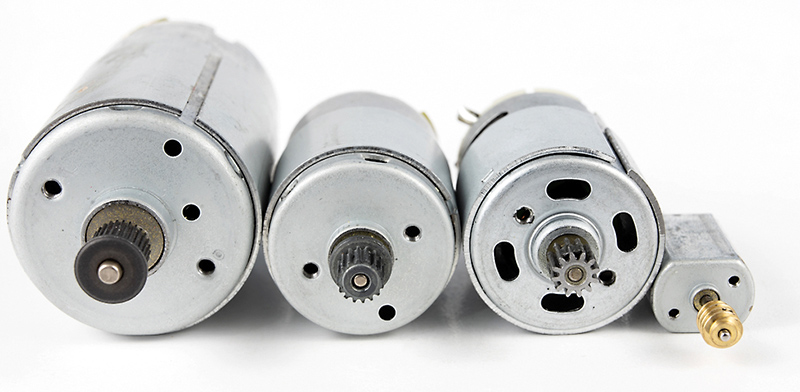
There literally are thousands of electric motor applications found worldwide. Electric motors are used so much, in fact, they consume nearly half of the world's electrical power, and it earns $90 billion each year.
How do Electric Motors Work?
Simply put; electric motors convert electrical energy into mechanical energy. There are two types of motors: alternating current and direct current.
- An alternating current (AC) motor is an electric motor driven by alternating current. There is a ring of electromagnets around the outside of a motor designed to make a rotating magnetic field.
- A direct current (DC) motor has inductors inside that produce a magnetic field used to create movement.
Rather than trying to explain the physics behind the operation of electric motors, I decided that I would cheat: let somebody else show you!
Although it's nearly 12 minutes long, Jeremy Fielding, in a straightforward manner, explains how electric motor work.
As I said before, you can't swing a power strip without hitting an electric motor: they are everywhere!
I know how boring history is to some people, but it's important. I'll make it a short walk into the past.
The Story of Electric Motors
There are a myriad of people who've advanced electric motors into the versions we see today.
Early Fathers of Motors
The seeds of electric motors reach back as far as Benjamin Franklin. Franklin, along with Andrew Gordon, experimented with electrostatic motors.
Eighty years later, Ampère invented the solenoid. A year later Michael Faraday discovered the relationship between magnets and electricity by observing a magnet, suspended in a magnetic field, rotate.
The work those four men accomplished opened the door for a series of significant achievements in the motor's evolution. Fast-forward to 1886, and we enter into a charged debate between Thomas Edison and Nikola Tesla.
"War of the Currents"
Edison and Tesla were contemporaries. Each worked on distributing electricity, but how to spread the electrical current became a point of contention between them.
Their feud became known as the War of the Currents. Edison promoted DC distribution of power. Tesla, on the other hand, argued for AC.
DC Power Distribution

The main knock against Edison's DC power distribution was its inability to travel far without losing energy.
A simple analogy illustrates DC power. Let's say you're holding a tennis ball while standing on a long, flat road with nobody standing in front of you. You bounce the tennis ball as hard as you can down the road.

At first, the ball travels fast and bounces high. However, it loses steam the further it goes, and it quickly slows down.
This simple analogy shows the limits of DC transmission. The further the current travels, the weaker it becomes.
AC Power Distribution

Let's use that same tennis ball analogy to illustrate AC power distribution.
You're back on that long, flat road, but this time people are standing fixed distances away from each other.
After throwing the ball, it starts in the same way as the DC analogy: excellent speed and bounce. However, instead of slowly losing energy, the next person catches the ball and bounces it just as hard as you did to the next person. Then the next person down the line does the same thing, and so on.
Tesla developed transmission substations, power substations, and transformers that carried the current much further and stronger than Edison's DC. In our AC analogy, each represented that setup, which was eventually named the **power distribution grid**.
One primary feature of AC power was the use of induction. Induction transformed low voltage into a high voltage, then when wired to home, the current stepped down.
Eventually, city engineers realized how efficient and consistent Tesla's AC power behaved, and used his theory to power our cities.
Electric Motors Getting Their Groove
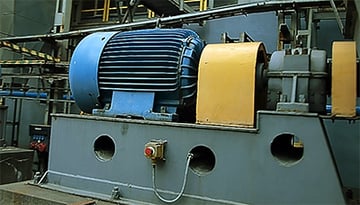
As the 20th Century progressed, electric motors helped power the way.
AC became standard for industrial markets because of its efficiency and power.
Because of its simplicity and ability to scale to small and portable applications, DC became the driving force behind home appliances, as well as some industrial uses.
For this article, we'll focus only on DC motors. Specifically, fractional DC motors (they're really small).
DC Motors
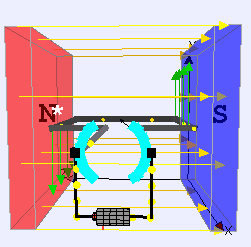
As technology and tools advanced, manufacturers started producing much smaller DC motors.
A Lot of Power in a Small Package
DC motor has a higher power density and is much smaller than a comparably-sized AC motor. The reason for this size difference is the lack of a field coil in the motor's stator. Not having this coil makes a difference when you need to work in small spaces.
A DC motor has a higher power density and is much smaller than a comparable AC Motor. The reason for this size difference is the lack of a field coil in the motor's stator. Not having this coil makes a difference when you need to work in small spaces.
There are two types of DC motors: brushed (BDC) and brushless (BLDC).
Brushed DC Electric Motors
The permanent magnet brushed DC motor is the most commonly used DC motor. These BDC motors run our appliances, toys, and automobiles.
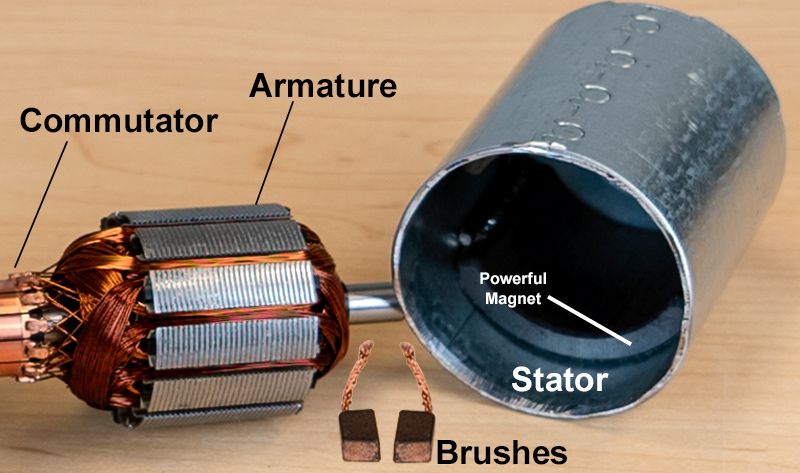
BDC motors are made up of four components: a stator, commutator, armature, and brushes.
Stator: the stator generates a stationary magnetic field surrounding the rotor. The magnetic field is made in one of two ways: permanent magnets or electromagnetic windings.
Commutator: the commutator is a split ring that transfers electrical power between the stator and armature.
Armature: an armature is an electromagnet made from coiling thin wire around two or more poles of a metal core. As the armature rotates, it provides energy at the end of the shaft when in contact with brushes.
Brushes: the name brush is a misnomer. Brushes inside an electric motor are copper squares or graphite compounds making contact with the commutator. This connection creates a dynamic magnetic field.
Advantages of BDC Motors
Brush DC motors have the advantage of having simple design and construction. Other benefits include:
Cost: because BDC motors don't require extra circuitry for control, they're easier and cheaper to manufacture.
Popularity: because of the cheaper manufacturing cost, BDC motors are the most commonly used DC motors.
Response: the constant stator field allows the BDC motor to respond very quickly to voltage changes.
Torque: The torque (the twisting force causing rotation) is limited by the stator field which gives the motor good low-speed torque and limited high-speed torque.
Disadvantages of BDC Motors
The carbon brushes are the most significant disadvantage of BDC motors. Because of continuous friction against the armature, those brushes wear down. Depending upon the size of the BDC motor, there are only two solutions to worn brushes: replacing the brushes or replacing the motor itself.
Size: because brush DC motors require an armature and brush, they're larger than brushless DC motors.
Lifespan: a brush DC motor has a shorter service life for two reasons:
- Brushes wear out because of their continued use.
- The lose of their magnetic properties over time, reducing the efficiency of the motor.
Speed Range: The speed range of a BDC motor is dependent on how consistently the brushes connect with the commutator.
Noise: BDC motors are louder than BLDC motors because there is arcing on the brushes creating electrical, magnetic interference.
Brushless DC Motors
As you guessed, a brushless motor is a motor without brushes. If you flipped a BDC motor inside-out, it becomes a BLDC.
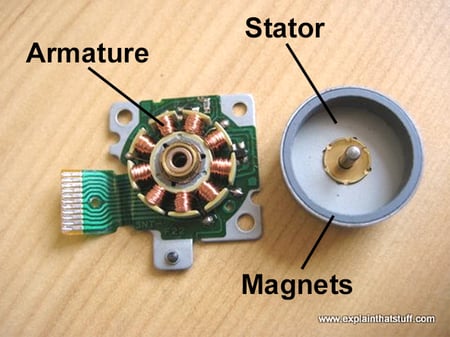
BLDC motors have no brushes to create the dynamic magnetic field. Instead, that field is formed by placing permanent magnets on the armature and move the electromagnets to the stator.
Advantages of BLDC Motors
BLDC motors have several advantages over BDC motors:
Power: Higher power density and are smaller than equivalent motors.
Torque: Able to maintain or increase the torque at various speeds.
Efficiency: Greater mechanical power with less electrical power energizing the motor.
Maintenance: not having brushes eliminates overall maintenance. Since there are fewer parts to wear out, there's no maintenance required.
Noise: Generally quieter than other motors. Because the internal components of the motor are enclosed, they operate with less noise and electromagnetic interference.
Size: taking away the brushes and armature are big reasons (pun intended) BLDC motors can be scaled down without losing efficiency and power.
Disadvantages of BLDC Motors
Like any piece of equipment, there are some drawbacks to BLDC motors:
Price: They aren't cheap to make. That cost carries down the economic ladder to the end user.
Electricity: to work, BLDC motors require a steady power source.
Controls: controlling a BLDC motor is more expensive and complicated than BDC motors. Sometimes the controller equals or exceeds the cost of the BLDC motor itself.
Gearmotors
There's one last family tree segment of DC motors: the gearmotor.
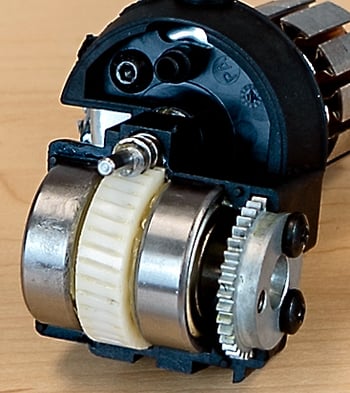
Gearmotors are most often used in applications needing more force to move heavy objects.
A gearmotor combines an electric motor with a gearbox. This combination creates high-torque/low-speed applications.
The BDC gearmotor delivers the rated power immediately; there is no power buildup. Gearmotors provide the right amount of torque in either direction and works quietly.
Most importantly, a gearmotor eliminates table drift. Table drift is the movement the table makes when the controls are no longer engaged.
Benefits of a Gearmotor
Adding gearing to a motor significantly increases the torque of the motor. Other benefits include:
- More power in a smaller package
- Higher torque at low speeds
- Gearmotors eliminate table drift (inertia)
- Simplified design: combining the electric motor with gearing saves both time and space.
- Prolonged life: if appropriately sized and used, a gearbox has a long useful life
- No couplings: combining a motor with gearing eliminates the need for couplings
Up and Down World of Standing Desks
The combination of a robust electric motor with a gearbox results in tremendous precision in the operation of an adjustable height desk.
There are several ways to adjust the height of a desk: cranks, pneumatic lifts, or manually. However, electric controls are the most popular option for adjusting desks.
A standing desk is supposed to stop moving when a finger lifts off the power switch. Unfortunately, without dynamic breaking, there's drift.
Dynamic Braking
Have you ever tried suddenly stopping while swinging on a swing? No matter how hard you stick your feet into the ground, your momentum, or inertia, is so great that you need to take a few steps to gain control and stop yourself.
In the world of standing desks, that momentum isn't wanted. If you were to lower your desk stopping inertia, anything underneath your desk is in danger of being crushed. Including you! This is where **dynamic braking** takes over.
Some standing desk manufacturers don't utilize dynamic braking with their electric motors even though the control box of all motors can be programmed to use this method of braking.
Dynamic braking is a method for braking a motor that may be needed when it's lifting or moving something heavy.
Without going into greater detail, dynamic braking stops a motor by applying a resistive load across the armature leads after disconnecting the motor from power.
While an electric motor converts electrical power into mechanical energy, a generator performs the opposite. A generator converts mechanical energy into electrical power.
The gearmotor temporarily becomes a generator to stop the motion of an object. In our case, an adjustable height desk.
I don't want to overburden you with an explanation of dynamic braking. Going into detail explaining how dynamic braking works takes up more space than what's allowed here. Instead, we'll tell how it works in a future article on the method of braking a motor.
Quality is More Than a Word
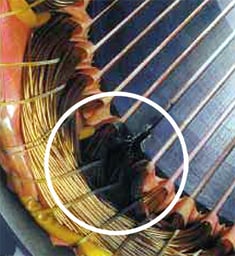
In certain environments, the emphasis is on quantity, not quality. Cut-rate manufacturers use poor engineering, cheap parts, and poor motor construction.
Remember, the electric motor has been around for almost 200 years. It's hard to screw them up. By cutting corners, cheap manufacturers screw them up.
Two things that are directly related to motor quality are windings and magnets. If the motor has poor windings, the efficiency, and longevity of that motor drop like a rock. Winding problems are one of the leading causes of electric motor failure.
The strength of an electromagnetic field depends on strong magnets— the stronger the attraction, the stronger the field. Poor windings, weak magnets, or both lead to bad electric motors.
What All This Means
If you're buying a height adjustable desk, odds are you're not going to buy the first one you see. You'll spend time online researching different brands and comparing them against each other.
Don't overlook the electric motor when compiling your list of advantages and disadvantages for each desk. Things to think about:
- Lifting capacity
- Speed
- Noise
- How easy it is to replace
- Warranty
A standing desk is more than a work surface; it's your workbench, and you spend a great deal of time there. If you make the best, informed decision, your standing desk choice becomes a great tool.
For a properly functioning desk, several pieces need to work together towards a common goal: raising and lowering your desk. If one part along the line breaks down, the whole thing stops working.
A vital component of any electric height adjustable desk is the motor. It's very easy to overlook it, but it's the reason your desk goes up and down.

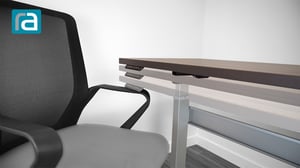
COMMENTS